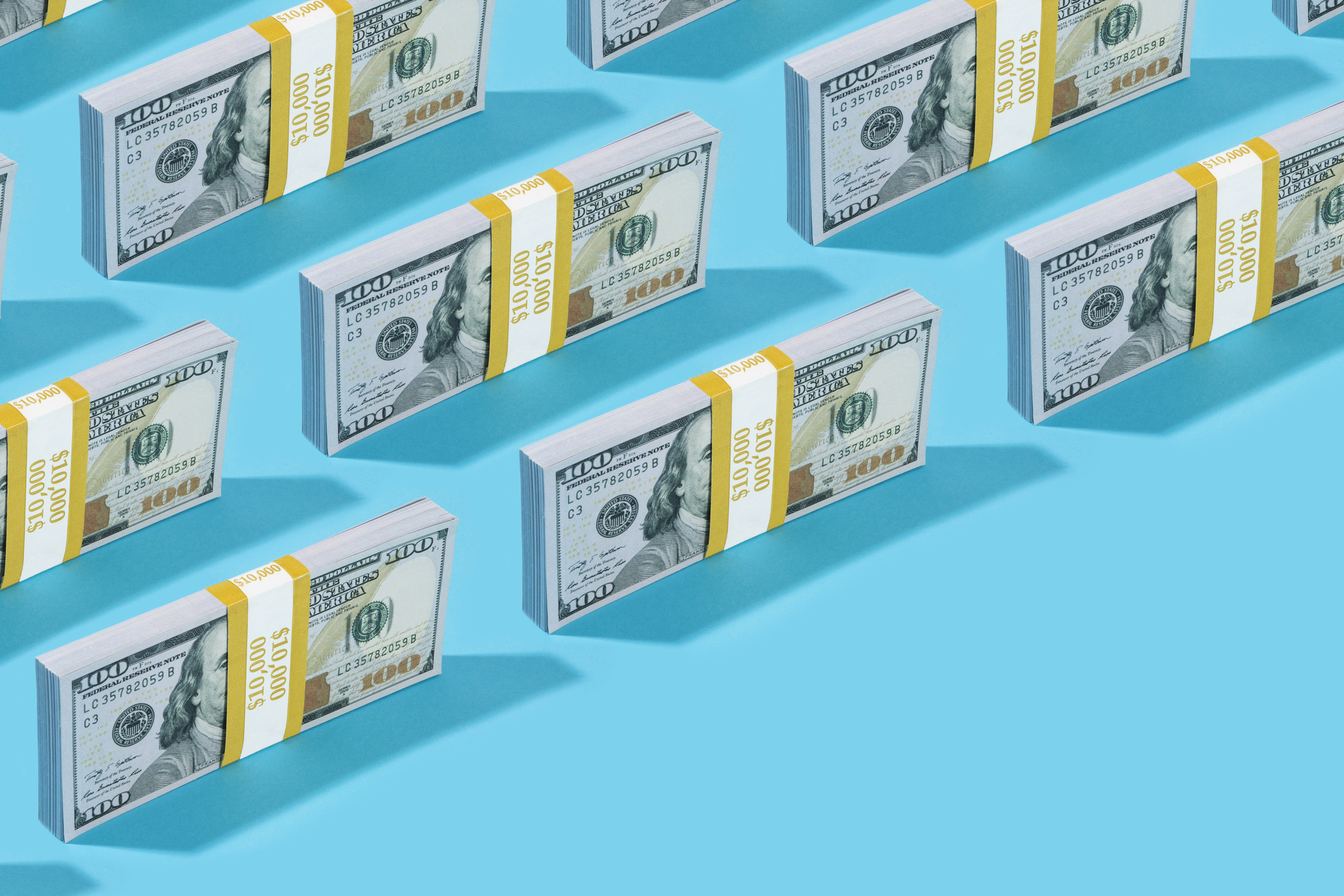Yes, Your 401(k) Has Its Perks, But It’s Not the Only Way to Save
Tax diversification can play a vital role in stretching your retirement savings. Here’s how to achieve the flexibility you need with a three-bucket system.


There’s no doubt tax-deferred investment accounts, such as 401(k)s, 403(b)s, 457 plans, and traditional IRAs can play a valuable role in most any retirement savings plan.
Not only do these accounts offer the immediate incentive of an upfront tax break, but workers also often can benefit from employer contributions.
I can’t think of too many financial experts who would tell you to pass on getting that “free” money from your company – or the opportunity to save on taxes each year as you work to grow your nest egg.
From just $107.88 $24.99 for Kiplinger Personal Finance
Become a smarter, better informed investor. Subscribe from just $107.88 $24.99, plus get up to 4 Special Issues

Sign up for Kiplinger’s Free Newsletters
Profit and prosper with the best of expert advice on investing, taxes, retirement, personal finance and more - straight to your e-mail.
Profit and prosper with the best of expert advice - straight to your e-mail.
That doesn’t mean, however, that tax-deferred accounts should be the one and only way you save.
Remember: Every dollar withdrawn from a 401(k) or similar plan during retirement is considered ordinary income — which means it’s subject to ordinary income tax. If the bulk of your savings is stashed away in a tax-deferred account, you could be facing some scary-high tax bills in the future when you begin taking withdrawals.
Fortunately, other options exist for investing and saving for retirement — and options are always a good thing to have. Even if you’re nearing retirement and a sizable chunk of your retirement savings is currently sitting in a tax-deferred account (or accounts), you still can build some tax diversification into your plan.
3 Buckets for Tax Diversification
You can create that diversification (by yourself or with the help of your financial adviser) by dividing your assets into different tax “buckets”:
- A tax-deferred bucket that includes the funds in those aforementioned 401(k)s, 403(b)s, IRAs and similar accounts that will be taxed as ordinary income (based on your current tax bracket) as you make withdrawals.
- A taxable bucket that includes bank accounts, brokerage accounts and other investments that are taxed currently, but often at a preferential rate. (Most people, for example, pay a 15% tax rate on the net capital gains and qualified dividends earned annually from taxable investment accounts.)
- A tax-free bucket that includes Roth IRAs, Roth 401(k)s, properly structured cash value life insurance policies and municipal bonds, which are tax-free upon withdrawal.
By spreading your money among these buckets, you’ll have more flexibility with your withdrawals. You can more easily control which tax bracket you’ll land in from year to year and, therefore, how much you’ll pay in taxes.
Flexibility is always a plus when it comes to financial planning. But the ability to manage your tax bracket could become especially important if tax rates rise in the future, as many experts are predicting. And we already know the current tax brackets and lower income tax rates brought to you by the Tax Cuts and Jobs Act of 2017 are set to expire at the end of 2025.
How Those Buckets Could Save You on Taxes
If your financial professional — or a tax-savvy friend — has been pushing you to do a Roth conversion in recent years, this is likely the reason. So, let’s look at a basic hypothetical example of what adding a Roth IRA to your plan could mean going forward.
Let’s say you withdraw $50,000 from your 401(k) and, combined with your other income sources, that puts you in a bracket that’s taxed at 24% (based on current rates). You could end up handing $12,000 to the IRS, leaving you with $38,000.
But what if, instead, you were able to split that $50,000 withdrawal between two accounts. You withdrew $25,000 from a tax-free Roth and the other $25,000 from the tax-deferred 401(k)? You wouldn’t owe any taxes on the Roth withdrawal (if you’ve followed the Roth rules), and because the move likely would keep you in a lower tax bracket, you’d pay less in taxes on the 401(k) withdrawal. If you stayed in a bracket with a 12% tax rate, for example, you’d owe the IRS just $3,000 on the money you took from the 401(k).
That’s a substantial savings.
The Bottom Line
Unfortunately, I can’t tell you the ideal proportion of savings to keep in each tax bucket as you build tax diversification into your retirement plan. The right mix for you will be determined by your individual needs and goals. And the amount you withdraw from the accounts in each of those buckets will probably vary from year to year, as the situation requires.
I can tell you, though, that having a carefully planned, diverse mix of tax-deferred, taxable and tax-free accounts in the distribution phase of your financial life can be as important as having a carefully planned, diverse mix of assets in the accumulation phase.
Have you been loading most of your savings into tax-deferred accounts? Talk to your financial adviser about the benefits of contributing to a Roth or, if you’re older, converting some funds to a Roth account over the next few years. Consider, too, how a brokerage account, life insurance and other investments could benefit your overall plan. And make sure you look at how your annual investment withdrawals might work in combination with other income sources, such as Social Security and pensions.
If you’re hoping to extend the life of your portfolio (and who isn’t?), tax planning is a must.
Kim Franke-Folstad contributed to this article.
The appearances in Kiplinger were obtained through a PR program. The columnist received assistance from a public relations firm in preparing this piece for submission to Kiplinger.com. Kiplinger was not compensated in any way.
Profit and prosper with the best of Kiplinger's advice on investing, taxes, retirement, personal finance and much more. Delivered daily. Enter your email in the box and click Sign Me Up.

Todd Schick is the president and financial adviser at Aspire Wealth Management (www.aspirewealthmgt.com). He is a CERTIFIED FINANCIAL PLANNER™ and has earned the Chartered Life Underwriter® and Chartered Financial Consultant® designations.
-
 CD vs. Money Market: Where to Put Your Year-End Bonus Now
CD vs. Money Market: Where to Put Your Year-End Bonus NowFalling interest rates have savers wondering where to park cash. Here's how much $10,000 earns in today's best CDs versus leading money market accounts.
-
 New IRS Changes to FSA Contribution Limits for 2026: What to Know
New IRS Changes to FSA Contribution Limits for 2026: What to KnowHealth Care Flexible Spending Accounts have tax advantages worth looking into, especially in light of new IRS changes.
-
 QUIZ: What Type Of Retirement Saver Are You?
QUIZ: What Type Of Retirement Saver Are You?Quiz What is your retirement savings style? Find out with this quick quiz.
-
 Meet the World's Unluckiest — Not to Mention Entitled — Porch Pirate
Meet the World's Unluckiest — Not to Mention Entitled — Porch PirateThis teen swiped a booby-trapped package that showered him with glitter, and then he hurt his wrist while fleeing. This is why no lawyer will represent him.
-
 Smart Business: How Community Engagement Can Help Fuel Growth
Smart Business: How Community Engagement Can Help Fuel GrowthAs a financial professional, you can strengthen your brand while making a difference in your community. See how these pros turned community spirit into growth.
-
 In 2026, the Human Touch Will Be the Differentiator for Financial Advisers
In 2026, the Human Touch Will Be the Differentiator for Financial AdvisersAdvisers who leverage innovative technology to streamline tasks and combat a talent shortage can then prioritize the irreplaceable human touch and empathy.
-
 How Financial Advisers Can Deliver a True Family Office Experience
How Financial Advisers Can Deliver a True Family Office ExperienceThe family office model is no longer just for the ultra-wealthy. Advisory firms will need to ensure they have the talent and the tech to serve their clients.
-
 Why Investors Shouldn't Romanticize Bitcoin, From a Financial Planner
Why Investors Shouldn't Romanticize Bitcoin, From a Financial PlannerInvestors should treat bitcoin as the high-risk asset it is. A look at the data indicates a small portfolio allocation for most investors would be the safest.
-
 I'm a Financial Pro Focused on Federal Benefits: These Are the 2 Questions I Answer a Lot
I'm a Financial Pro Focused on Federal Benefits: These Are the 2 Questions I Answer a LotMany federal employees ask about rolling a TSP into an IRA and parsing options for survivor benefits, both especially critical topics.
-
 Private Credit Can Be a Resilient Income Strategy for a Volatile Market: A Guide for Financial Advisers
Private Credit Can Be a Resilient Income Strategy for a Volatile Market: A Guide for Financial AdvisersAdvisers are increasingly turning to private credit such as asset-based and real estate lending for elevated yields and protection backed by tangible assets.
-
 5 RMD Mistakes That Could Cost You Big-Time: Even Seasoned Retirees Slip Up
5 RMD Mistakes That Could Cost You Big-Time: Even Seasoned Retirees Slip UpThe five biggest RMD mistakes retirees make show that tax-smart retirement planning should start well before you hit the age your first RMD is due.